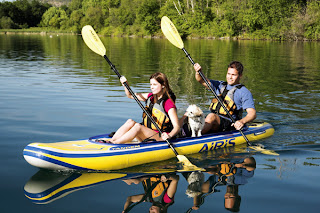In Crossing the Chasm, pragmatists look for the whole product which is really a strong network of third party components, a trained labor force and referenceable customers in the same industry. Under the new model, instead of waiting for the entire network to be created with strong links, create weak links between the nodes of the network and then help strengthen the links until they are sufficiently strong.
Here is how it works. Imagine a grape vine seedling symbolizing a growing network. In the wild, it will grow in every direction looking for something to attach to. The leaves may shade other leaves and the grapes will be difficult to harvest if they grow at all. Once the vine has matured and the branches are strong, it is difficult to change the shape of the branches without damaging the vine itself.
This network grew without structure and will be impossible to correct.
To solve this problem wineries create a weak network structure using a stick and wires. As the vine grows, it wants to follow the predefined network path. The winery even cuts off the top shoot of the vine as it extends past the upper wire to encourage nutrients to go into the side branches. With just a little bit of attention, the vine has grown into a well structured network that allows the plant to receive the most amount of sunlight and produce abundant fruit. In some case, you can even remove the trellis after the plant has matured because the vine or network will be strong enough to stand alone.
This network has grown following a predicted path.
In business, you would use this model by creating weak links between the eventual players with little up front cost. After each group sees that there is the potential for a strong network, a single event could trigger a chain reaction of adoption.
Here are the steps:
Here are the steps:
- Identify all the constituents who would participate in the final network. For the vine, this is determining the optimal sun and spacing between the plants.
- Create weak links between all the parties so that everyone has visibility to the other players and what role they will play. This can take the form of commitments based on a specific condition. The trellis serves as the path that the vine or network will follow.
- Trigger an event that causes one of the commitments to be met. When this condition is filled, the other players will join in causing a strong network to be created following the lines of the weak network. In the case of the vine, plant the seed and water it. The vine will follow the predefined network as it grows.
Here is an example of how this technique could have been used to help HD DVD win HD DVD/Blue-ray format war.
Step one is to identify the best content producers, player manufacturers and distribution channels.
Step two, go to the major content producers and ask them for a commitment to produce several titles if a specific milestone is met such as 100K HD DVD devices sold. Next, go to the player manufactures and ask for a commitment to manufacture HD DVD players if a specific number of customers agree to buy the players. Repeat the process with the distribution channels.
Next, announce to the public the titles and manufacturers that are committed. Create a website that shows all the information in one place where people make a small deposit to buy a player at a defined price. The deposit is returned if the 100K other people do not sign up. People can also pre-order what title they want, showing the content producers exactly what titles have demand. Also show who is willing to handle distribution. To create referenceable customers, offer a bonus disk to people who sign up 10 of their friends and a free player to anyone who signs up 20 friends.
At this point, the titles are known, the distribution channel is in place, the hardware is identified and the customers have expressed demand. No one has spent any money, but the network has defined nodes with weak links between the nodes. The key factor is making sure everyone knows exactly what path they will follow and what to expect from the other players. Now the question is, "who will blink first?"
In step three, you need some public kickoff event to create a chain reaction. You could pass out disks for a major blockbuster on opening night or randomly start to ship players to the people who signed up the most peers. Any event that exceeds peoples expectations should start the process. In this case, just the fact that people are signing up should trigger the event.
Sample webpage that would show the weak links between nodes.
As the number of users increases, the strength between nodes also increase.
By creating weak links between nodes using a lattice structure, companies can lay the foundation for a network before the various parties have made major investments. This technique should allow rapid adoption of disruptive products with mimal risk of backing a technlogy that will not get adopted.






















